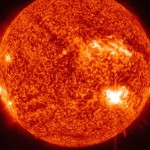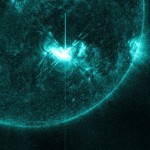
A huge coronal mass ejection took place on July 23, and it blasted right by NASA’s two STEREO spaceships. The dual datapoints suggest the CME was moving 1,800 to 2,200 miles per second, or as fast as 7.92 million miles per hour, making it the fastest ejection every recorded.
“Between 1,800 and 2,200 miles per second puts it without question as one of the top five CMEs ever measured by any spacecraft,” said C. Alex Young, a NASA solar scientist at the Goddard Space Flight Center, in a statement. “And if it’s at the top of that velocity range, it’s probably the fastest.”
CME’s are usually harmless but they can trigger problems for satellites and power grids on Earth if they are aimed in our direction. July was a very active month for sun, with major X-class flares recorded.
The speedy July 23 CME was not fired at Earth.




